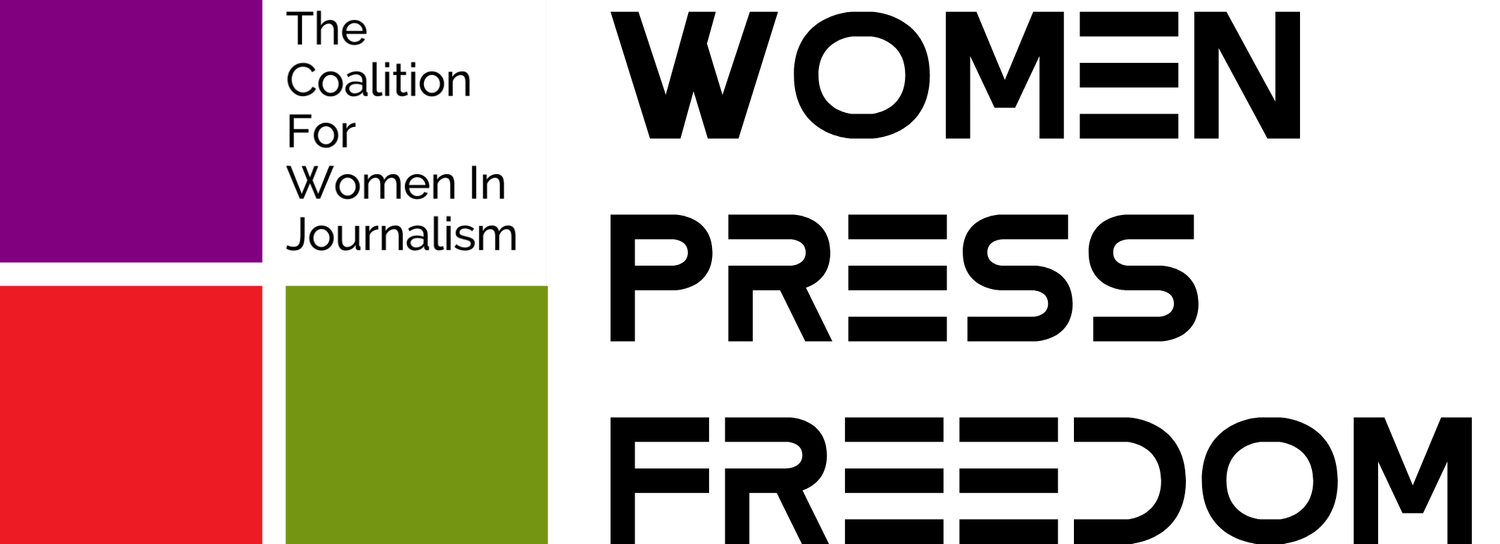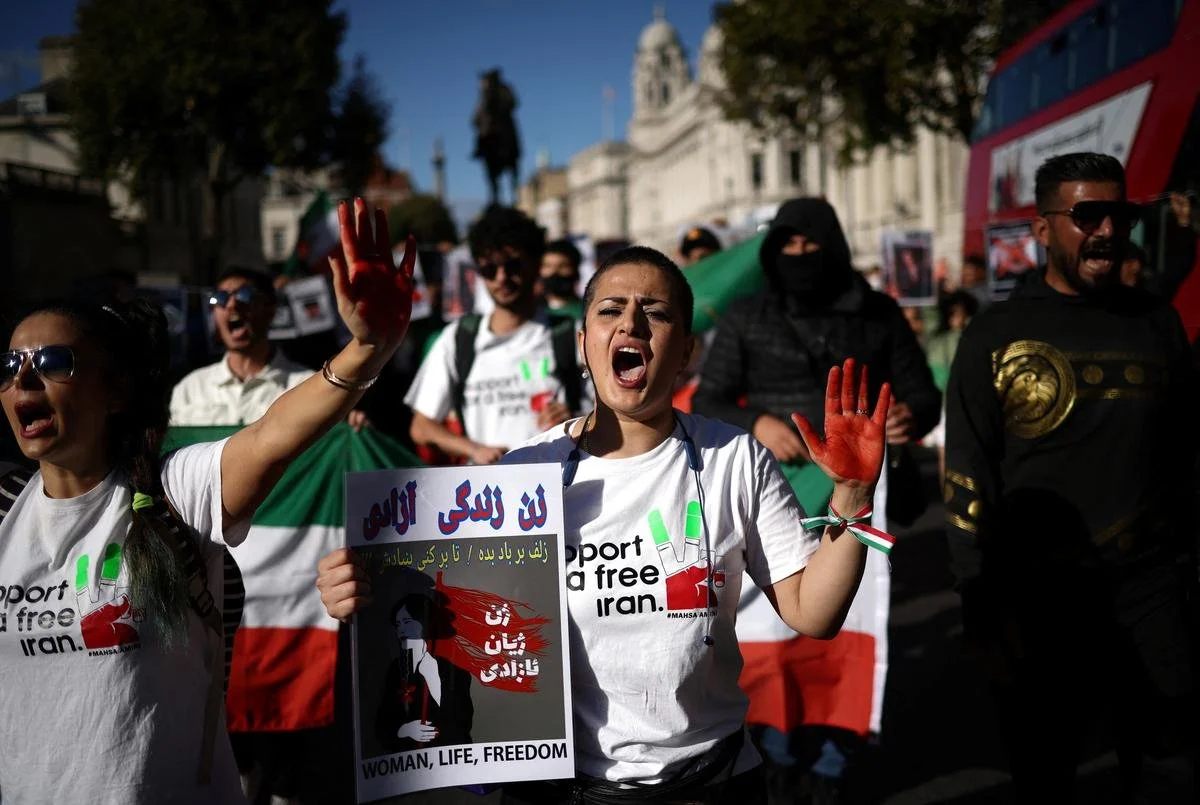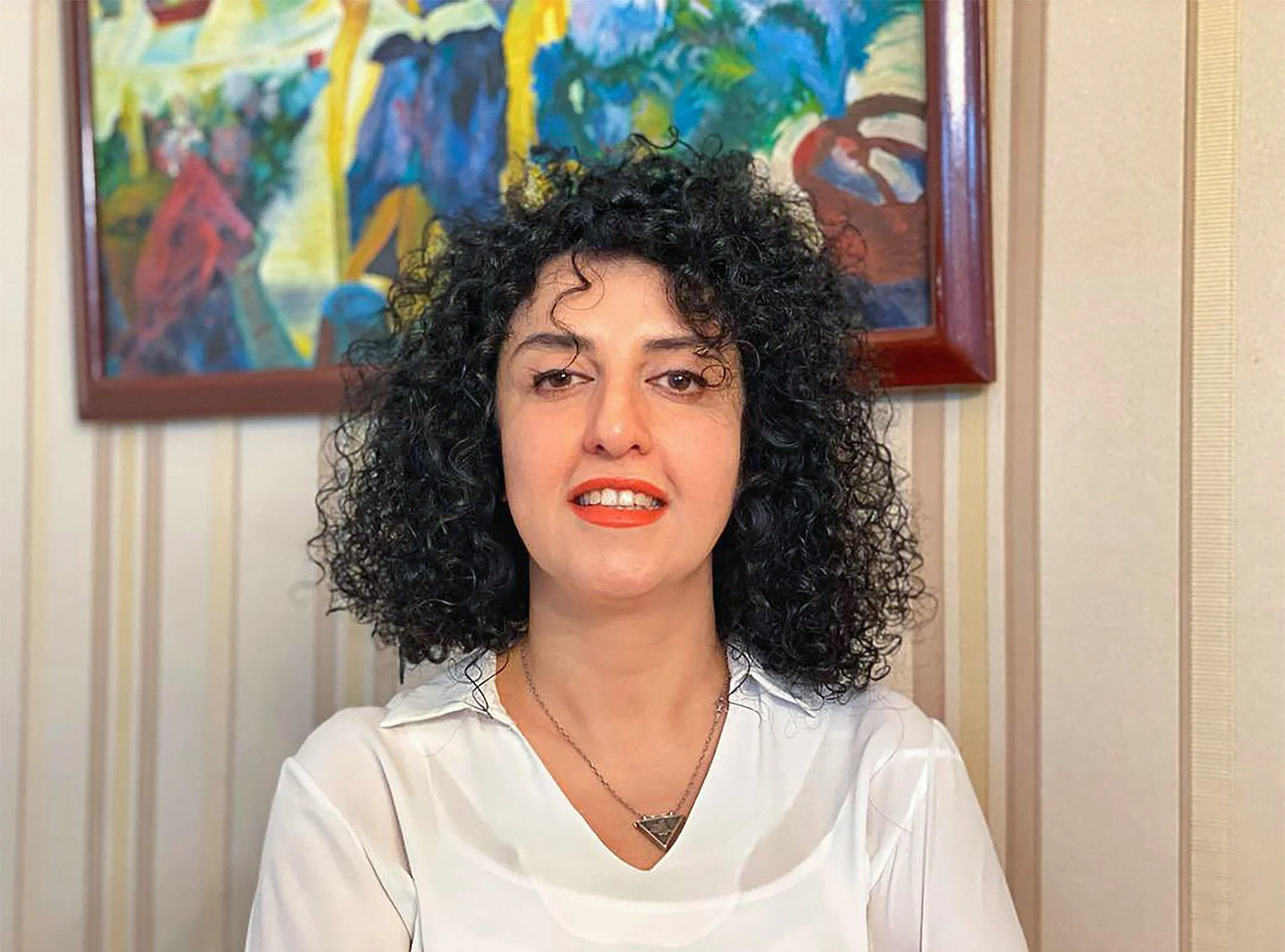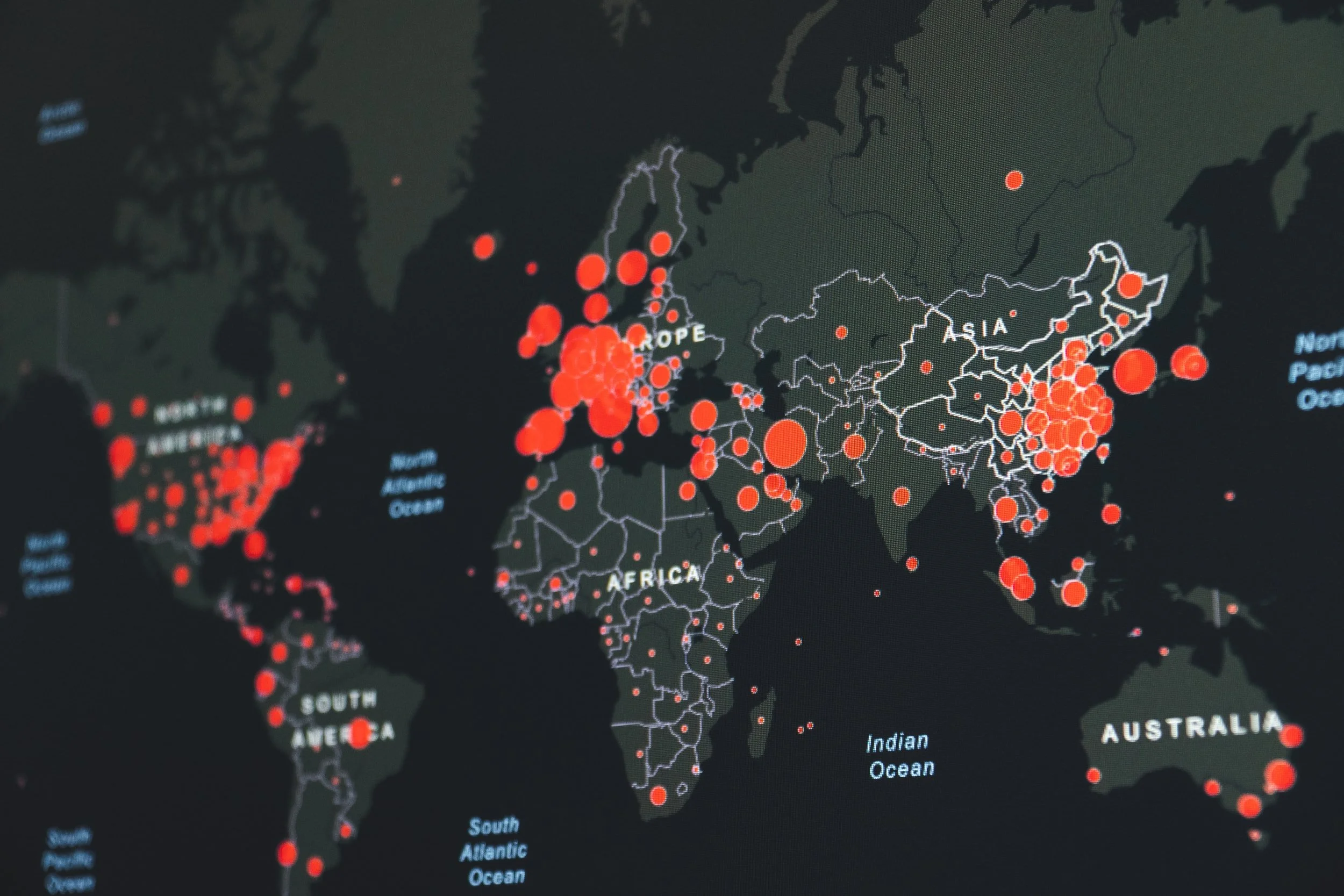Iran: With Arrests Of Three More Women Journalists, Iran Is Cracking Down On Gender-Focused Press
Location: Iran, Tehran
Date: October 19, 2022The timeline below is updated on January 10, 2023.
It was around noon on Wednesday morning in Iran, when one of our sources informed the CFWIJ that another female journalist in Abadan was arrested. When Mandana Sadeghi was approached by security forces, she was first interrogated about her work, and then questioned, particularly about her previous work as a journalist for local media. We are told by sources that Mandana and her family were threatened and told ‘they are committing crimes against the state, which will get them into trouble’. Both Mandana and her husband have been taken by Iranian security forces into an undisclosed prison in Abadan.
While our team was still verifying this case from several sources we got information about another arrest of a journalist, this time in another city called Shiraz. According to our sources, local journalist Farkhondeh Ashori was approached by security agencies in a similar manner, threatened, shamed and told she was working against the Iranian state. Then taken into custody also in an undisclosed location. Freelance journalist Farzaneh Yahyaabadi was also arrested from her office in Abadan in the morning.
We verified three cases of arrests with several sources, who courageously continue to share information with us. These three arrests on Wednesday bring the total number of women journalists arrested to 18. Just last week we reported the 15th arrest of a female reporter, (see ref to this report), making Iran the top jailer of women journalists in the world. Since then, five of them have been released on bail. Before the death of Mahsa Amini 16 women journalists were behind bars. Since the death of the 22-year-old, 13 more women journalists have been arrested in Iran bringing the total number of incarcerated women journalists to 29.
“These arrests are unprecedented. We are told security agencies have been listing names of women journalists who they potentially want to arrest based on their work. Many of the journalists recently arrested were not actively reporting on the unfolding events but were taken for some of their work in the past. What we are seeing in Iran, is nothing less than a purge,” CFWIJ founder Kiran Nazish says. “In these precarious conditions when Iranian journalists are under threat from within the country, the CFWIJ calls upon the international community, feminist leaders and icons to raise their voice against these attacks on the press and women in particular.”
It’s been both hard and uplifting to be in touch with courageous #womenjournalists in #iran. Here’s what one of them told @CFWIJ this week. A reminder that #iran is one of the biggest jailers for #womenjournalists and activists, but these women are tough women! #freeThePress pic.twitter.com/5ARtw5cbI8
— Kiran Nazish (@kirannazish) September 26, 2022
Threats That Go Beyond Getting Arrested
Since the protests started over Mahsa Amini’s death, journalists have been targeted beyond arrests. The CFWIJ has been monitoring the situation on the ground as well as journalists facing intimidation and threats outside of the country. Our sources have informed us that numerous journalists were arrested by the Islamic Republic immediately after Mahsa Amini was killed, and this procedure continues until today. Journalists have told us they are followed by unidentified men, often before interrogation. Many journalists across different cities in Iran have gone into hiding. We recognize that while seeking shelter with a family or friend is available to some journalists, not all journalists can do that, risking their life. “Almost all of my press colleagues from the newspaper are now living away from their homes. There is a very real fear of arrest and intimidation for them even if journalists are not reporting at the moment. Those of us who have children, want to be safe not for ourselves but our children,” Iranian journalist by initials of M. V told the CFWIJ on conditions of anonymity to avoid threats from the Iranian state.
We condemn these threats and the aggressive crackdown of the press in the country. “In a country where women are a great minority in the media, almost half of women journalists arrested, and almost ALL women journalists aware of the real threat they face if they write something to report what is happening in the country is quite alarming. We have no doubt that Iran is deliberately targeting women in the media, particularly for their gender,” said CFWIJ founder Kiran Nazish.
“In most cases, due to the restrictive laws that exist for legal representation in political cases and the laws which have prevented the independence of lawyers from the government, attorneys do not have much access to the prisoners’ files, however, they provide counseling services to political activists and journalists before arrest, as well as give guidance to the prisoners’ families until the cases reach the trial stage in court..
The news reporting environment has been isolated by authorities in such a way that the chronic censorship of media in Iran has increased drastically. The media is dictated clear instructions on what to report and journalists face the pressure of constant surveillance, threats and intimidation. In addition, the restrictions imposed on the internet by the government have placed independent reporting of current events by press members and citizen journalists under serious threat. This makes free circulation of information extremely difficult and almost impossible. As a result, information about current events has been transmitted to the world in a limited and delayed manner. Publishers of such information and activists with internet access are arrested, summoned and threatened on a daily basis.” - said exiled Iranian journalist S.K.
Journalists, Activists and Feminists Received Threats Outside of Iran
Since the protests began, the CFWIJ has been monitoring Iranian journalists receiving threats outside of the country. Several prominent Iranian women journalists and authors have been targeted online and offline. Sometimes through organized internet trolling used to spread misinformation and character-assassinate female journalists. We have so far noted at least 12 cases of organized online trolling against women reporting on the situation from outside the country, through their sources on the ground. Sometimes the trolling has been so aggressive that it has become a Twitter Trend. New York Times reporter Faranah Fassihi and Executive director or Gender Equality Org Sherry Hakimi have faced some of the most vicious trolling campaigns against them.
Negar Mortazavi who has also faced online trolling, (see this CFWIJ report) was also targeted in the physical world. The day, Negar was scheduled to attend a panel discussion focused on the current situation in Iran at University of Chicago, the campus received bomb threats.
“This is a coordinated and targeted smear campaign against me and a few other journalists. These accusations are absolutely false and quite dangerous, and put my safety at risk. It is ironic that in the midst of a feminist revolution in Iran, female journalists who are chronicling these events are being targeted with violence and threats,” Iranian-American journalist and host of Iran Podcast told the CFWIJ.
TIMELINE of Arrests of Women Journalists Since September 19, 2022
This timeline, current as of October 19, is based on information compiled from CFWIJ’s own sources inside and outside Iran, local media reports, the Tehran Journalists Association and the Committee to Protect Journalists.
On September 19, journalist Yalda Moaiery was physically assaulted while being taken into custody along with other female protesters. Her family was not allowed to see her. According to her brother, the journalist was taken to a prison in Tehran. Moaiery was eventually released from Qarchak prison on December 22.
On September 22, Elahe Mohammadi, a reporter with state-run Hammihan Daily, Elnaz Mohammadi, a political reporter with partially state-run bi-monthly Andisheh Pouya magazine and Elahe’s twin sister were arrested.
Elahe Mohammadi’s husband has confirmed that she has been moved to Qarchak prison. Elnaz Mohammadi has since been released from prison. Elahe Mohammadi is incarcerated in Evin prison due to accusations by the Islamic Republic and Islamic Revolutionary Guards Corps (IRGC) for being trained as a foreign agent along with Niloofar Hamedi.
Batol Balali, a reporter with the state-run Pasargad weekly magazine, was also arrested from the southern city of Sirjan, in Kerman province, while covering protests in her hometown. She was released on bail later.
On October 30, 2022, Samira Alinejad, a reporter with the state-run local news website SirjanRavi News, was also arrested while covering the demonstration in the southern city of Sirjan, according to Ashkan News. She is being held at Sirjan central prison. Alinejad has since been released from prison.
On September 23, Fatemeh Rajabi, an economics reporter, was arrested from her home in Tehran. CFWIJ’s sources on the ground said her whereabouts could not be immediately ascertained. She was released on bail on October 18. Vida Rabbani, a political commentator, was sentenced to 10 years and four months in prison and banned from practicing journalism.
On September 24, sisters Zahra Tohidi and Hoda Tohidi, two political reporters, were reportedly taken by security forces. Details surrounding their arrest could not be immediately ascertained. Both journalists have since been released.
On September 26, Elmira Bahmani, freelance reporter, commentator and columnist on women’s rights issues, was arrested from the northern city of Rasht in Gilan province. The reason behind Elmira’s arrest is unknown and it is not clear whether or not she took part in any demonstrations in the city before her arrest. On the same day, Sarvenaz Ahmadi, a freelance political and cultural reporter, was also arrested by security forces and recently released after days in detention. She was released on bail later. On November 6, Ahmadi was arrested again along with her journalist husband after armed agents raided their home in Tehran. The reasons for their arrest are yet unknown.
On September 29, 2022 according to a report from the Iran Journalists' Association, Marzieh Talaee, journalist of Mokarian News Agency was arrested in Kurdistan and is among the first arrested journalists who are still in prison.
On September 30, Nasrin Hassani, a reporter for the local state-run newspaper Etefaghyeh was arrested in Bojnourd in North Khorasan province.
On October 1, Safiyeh Qarabaghi, a freelance reporter who covers women’s issues in her hometown of Zanjan, was arrested according to a tweet by her husband, who said she was taken to an undisclosed location. She was released on bail later.
On October 3, Sepideh Salarvand, an award-winning documentary maker, was arrested from her Tehran home. Her most recent project focused on Afghan child laborers in Iran. She was released 2 weeks later.
On October 5, Mehrnoosh Tafian, a freelance political reporter, was arrested from the southwestern city of Ahvaz, in the majority Arab province of Khuzestan, according to IranWire. On January 5, 2023, Tafian was sentenced to one year in prison and banned from leaving the country for two years.
On October 8, reporter Somayeh Masror, who works for the state-run Iranian Labour News Agency (ILNA) was arrested in her hometown of Isfahan according to the local state-run news website Sedayejoya.ir. Masror has since been released from prison.
On October 10, Saba Sherdost, a freelance reporter, was arrested from her home in Tehran. Her husband, Milad Fadaei-Asl, also a journalist, was arrested along with her. HRANA media says in a Twitter post that journalist Saba Sherdoost was released on bail until the end of legal proceedings.
On October 16, Saeedeh Fathi, a freelance sports reporter, was arrested at her home in Tehran and detained without any charges. Fathi has since been released on bail.
On October 19, journalist and political activist Mandana Sadegi in Abadan and journalist Farkhondeh Ashori in Shiraz were arrested according to CFWIJ sources on the ground. Mandana Sadeghi was previously prosecuted during the protests of November 2018 and criticism of what happened during the construction and then the collapse of the Metropol building in Abadan and has a case in the judiciary of Khuzestan province. She has since been released on bail after 42 days in detention. Freelance journalist Farzaneh Yahya-Abadi was also arrested from her office in Abadan in the morning.
On October 28, freelance photojournalist Malihe Darki, was arrested in the central city of Shiraz in Shiraz province according to a report from IranWire.
On the morning of October 30, 2022 journalist Marzieh Amiri was arrested for the third time. She was previously charged with 10.5 years in prison and 147 lashes. She is reportedly currently incarcerated in Evin prison. Her work was essential to reporting on the dire poverty in the country, gender inequality and government corruption among other issues. Amiri has been released on bail after 47 days in detention.
On October 30, Nazila Maroufian, a reporter of Rouydad 24 and former reporter of Didban Iran was arrested from a friend’s home and taken into custody. She was immediately transferred to the detention center of the Ministry of Intelligence known as Ward 209 at the infamous Evin Prison. There is no information about reasons for her arrest and charges yet. Nazila was the first journalist to interview Amjad, the father of murdered Mahsa Amini, on October 19. Maroufian has been temporarily released from Qarchak prison after 72 days, with a bail of 600 million tomans.
On November 10, 2022, police forces arrested Fatemeh Nasser Ranjbar, the public relations officer of Digikala.
On November 15, 2022, Saba Abdollahi was arrested as part of the national uprising in response to the murder of Mahsa Amini, a 22-year-old girl from Saqez, by the morality police in Tehran.
On November 16, 2022, Iranian security forces arrested Iranian journalist Fahimeh Nazari. Nazari is a freelance reporter who covers local politics and history for numerous newspapers and magazines. According to HRANA, she was arrested in her office in Tehran.
On November 27, Maryam Vahidian, a freelance reporter contributing to Shargh Daily, was arrested from her home in Tehran in the evening, according to reports from HRANA and Shargh Daily. Vahidian had been reporting on labor issues and the country’s workers’ movement. Her laptop, phone, and other personal devices were confiscated.
On November 27, Iranian security forces also arrested Nastaran Farokheh at her home. They confiscated her laptop and phone, as well as the phones of her family members, Shargh said on its website. The reason for the arrest is not clear yet. She has since been released on bail.
On December 17, 2022, Ziba Omidifar was arrested in Qorveh and was transferred to the Sanandaj Revolutionary Guard Intelligence. Omidifar, reporter of Kurdpress News Agency in Qorveh, was taken to Kausar Hospital in Sanandaj by IRGC security forces on the morning of December 24, a week after being arrested and transferred to the detention center of IRGC Intelligence Organization in Sanandaj. According to informed sources, this Kurdish journalist was tortured and harassed during a week of detention, and his level of consciousness decreased drastically. According to hospital personnel, Ziba Omidifar should be immediately returned to the detention center after initial treatment.
On December 18, according to HRANA, security forces arrested the Islamic Republic News Agency (IRNA) reporter Maryam Ghannad in Tehran and detained her in Ward 209 of Evin Prison..An informed source close to her family told HRANA that she was once allowed a short call informing her family that she is held in Ward 209 of Evin Prison. The reason for her arrest and the charges are still unknown.
Iran, which stood as the worst jailer of women journalists according to our data even before Mahsa’s death triggered unrest, now has a staggering total of 34 women journalists and media workers incarcerated. In a country where women in the media are in the minority, this is a significant number and we feel the crackdown on women journalists is particularly linked to their gender and reporting. These arrests continue despite the fact that most journalists (and activists) are also in hiding.
The Heavy Costs of Bails
Freelance journalist Safiyeh Qarabaghi, Fatemeh Rajabi, Batol Balali, Sepideh Salarvand and Sarvenaz Ahmadi were released on bail following their arrests. However, the cost for bails is too high for many journalists to pay. While there have been at least five releases, most women journalists (or their families) cannot afford to get out. “For many of us it is impossible to pay the bail money. And most of our journalist colleagues know that if they are taken to prison, there is no way we can pay for the bail. We know we will get beaten in the prisons, we know we could end up in solitary confinement. We know once we are arrested, getting out safely is not an option for many of us. Well, unless the regime changes,” one Iranian journalist risked her safety to share these conditions with the CFWIJ.
Additionally, there are several discrepancies in how information is shared with family or council; for example, the cost of bail money has increased several times which has caused some families to not ensure the release of activists and journalists despite raising and borrowing money.
Concerns Grow Over Internet Blocks
Access to clear communication is also complicated across the country. Some journalists have been allowed to make calls to their families or lawyers. But most of them have not been able to call, and when families reach out to inquire about their location, authorities share incorrect details with the family or legal representation. Getting information out while the internet is also blocked in many areas has worsened access to safety for many journalists and activists. This has been so consistent that most people we are in touch with think this is being done deliberately to misguide families and cause further distress.
“One word we keep hearing from journalists and families of those arrested is 'torture method.'
We are told that from arrests, threats of arrest, blocking of internet and communication systems to other methods used to intimidate journalists, activists and dissenters, are all a form of 'torture' to intimidate those demanding free expression and keep them in limbo,” Kiran Nazish, founding director of the CFWIJ said.
“I must mention, a few families of journalists have been told they will be released soon, but weeks have gone by without release, or clear information about how they are treated inside the prison.”
“As an Iranian woman journalist, I am experiencing different emotions simultaneously; anger, hope, and sadness, but definitely, not disappointment.”
Journalists in hiding are reporting back to us, but asking for their identities to remain anonymous. N.L, a woman journalist on the ground replied back to our inquiries saying that at this time, in Iran all press is under threat.
“It's not just women journalists who are in danger in Iran but all journalists. Even international and non-Iranian journalists are not welcome there. It's not just even the journalists in Iran but the ones outside Iran who work for other news platforms, Iran International, BBC Farsi, and VOA to name a few, that have been threatened many times because their families are still in Iran,” she said.
“We know that all political prisoners, specifically journalists, undergo physical and mental torture in the Islamic Republic's prisons. We're worried, terrified, to be accurate, for their safety. As an Iranian woman journalist, I am experiencing different emotions simultaneously; anger, hope, and sadness, but definitely, not disappointment.”
CFWIJ strongly condemns the targeting and arrests of women journalists and calls for the immediate release of all journalists arrested since protests started over Mahsa Amini’s death. We denounce the state’s persistent infringement on press freedom and reiterate, the trampling of women journalists’ rights is unacceptable in any and all forms.
Latest Reports
The Coalition For Women In Journalism is a global organization of support for women journalists. The CFWIJ pioneered mentorship for mid-career women journalists across several countries around the world and is the first organization to focus on the status of free press for women journalists. We thoroughly document cases of any form of abuse against women in any part of the globe. Our system of individuals and organizations brings together the experience and mentorship necessary to help female career journalists navigate the industry. Our goal is to help develop a strong mechanism where women journalists can work safely and thrive.
If you have been harassed or abused in any way, and please report the incident by using the following form.














